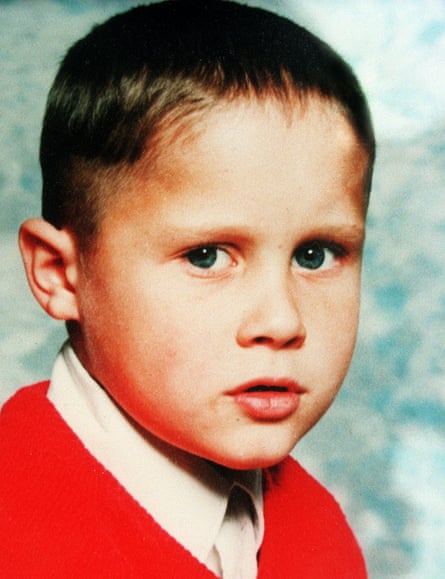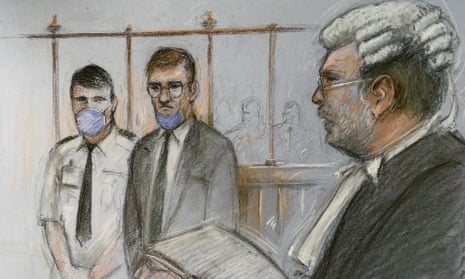The six-year-old schoolboy Rikki Neave was murdered 27 years ago by a boy aged 13 with a “grotesque interest” in child murder who lied for decades to cover up the killing, a court has heard.
James Watson, 40, denies the murder of Neave, who went missing in November 1994 and whose body was found in woodland near Peterborough the following day.
Opening Watson’s trial at the Old Bailey, John Price QC told the jury that Rikki’s mother, Ruth Neave, was charged and acquitted of his murder in 1996 and it is submitted that the decision to charge her was “wrong”.
It was in February 2020 that Watson, who had appeared as a witness in the original investigation, was charged with the murder after a DNA breakthrough established he had been in close physical contact with the clothing Neave was wearing when he was murdered, the court heard.
“In late November 1994, James Watson was exhibiting a grotesque interest in the subject of child murder generally, including in things said to his own mother,” Price said.

“Immediately after the killing, even amidst the widespread local interest, teachers of his noted in him a conspicuous preoccupation with the extensive reporting of the fate of Rikki Neave.”
Describing the case as a “whodunnit”, Price told the jury Neave was reported missing by his mother at 6pm on 28 November 1994.
At 12.05pm the next day, Rikki’s body was found by PC Malcolm Graham in a wooded area on the fringe of the housing estate in Peterborough where Rikki lived, five minutes from his home, the court heard.
Price said: “He had been strangled. The body was naked. It was lying on the ground, flat on its back. It had been deliberately posed by the killer, in a star shape, with outstretched arms and his legs placed wide apart.”
It was established that Rikki was murdered when still clothed, in what was “most likely a surprise attack” from behind, with the neckline of his own zipped-up jacket used “as an improvised ligature”, the court heard.
A single white shirt button was found perched on a leaf, 18 inches from Rikki’s left hand, the jury was told.
At 9.30am the next day, 30 November 1994, the missing clothing was found by a police constable in a wheelie bin on the pavement outside a house on Willougby Court on the border of the wood, 150 yards from where the body had been found, the court heard. Three small white buttons were missing from the shirt, Price said.
In May 1995, Rikki’s mother was charged with murder of her son and offences of cruelty towards him and his sisters, the jury was told. She pleaded guilty to the charges of cruelty but has always denied having anything to do with her son’s murder, the court heard.

She was unanimously acquitted of murder by a jury at Northampton crown court on 30 October 1996, Price said.
A cold case review was opened in 2015 and using techniques not available in the mid-1990s, scientific examination was taken of adhesive tapings applied in 1994 to the outer layer of Rikki’s clothing, the court heard.
The results revealed trace evidence of DNA of its wearer, Rikki, and of other people, including a definitive match with the DNA profile of Watson, who was 13 at the time and is now of no fixed abode, the jury was told.
On the morning of the day Rikki was reported missing, Watson and the boy had been seen with each other, the jury was told. When police first came to see him, Watson admitted he had met Rikki on that day but made no mention of any physical contact, the court heard.
The jury heard Watson told police Rikki was not someone he knew. “This was not true,” Price said. “He knew him well. It was one of many lies James Watson is alleged to have told others about events on the Monday he had met Rikki Neave and Rikki Neave had gone missing. He was still doing so, when questioned under caution by the police 22 years later, in April 2016.”
Witnesses saw Watson and Rikki playing together on the morning of the boy’s disappearance, while others saw the pair walking away together in the direction of the wood where Rikki was found, the court heard.
For the first time, in 2016 Watson introduced an element of innocent physical contact between him and Rikki in his account of what happened, the jury was told.
The trial is expect to last eight weeks.








